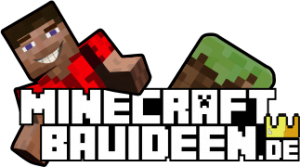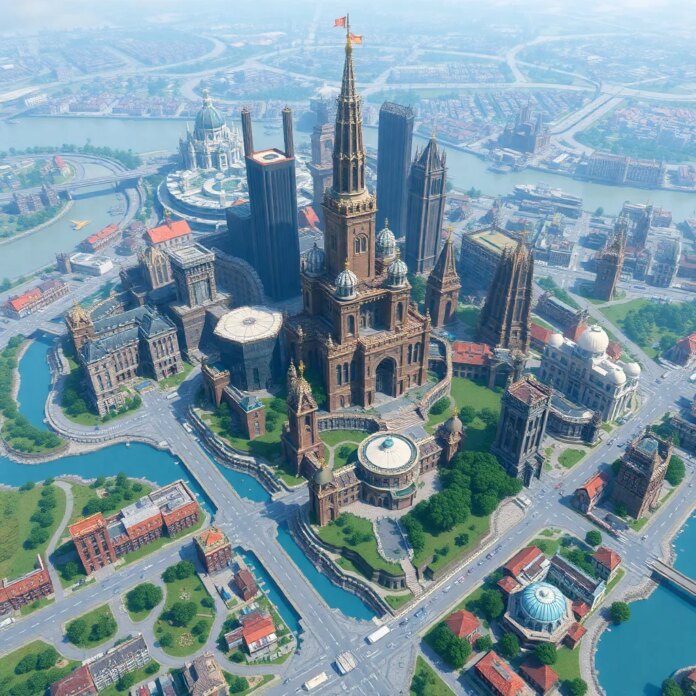Introduction to Minecraft city building
Minecraft offers a unique platform for creative building projects, especially when it comes to city building. Planning and implementing large projects in Minecraft requires not only creativity, but also strategic thinking and perseverance. In this article, we dive deep into the world of Minecraft city building and explore the steps needed to create impressive urban landscapes. Whether you're an experienced player or just getting started with Minecraft, this guide will provide valuable insights and tips for your next city-building project.
The importance of careful planning
Careful planning is essential before construction begins. Good planning lays the foundation for a successful urban development project and helps to use resources efficiently and identify potential problems at an early stage.
Choice of architectural style and era
First of all, you should be clear about the style and era you want to portray. Whether a futuristic metropolis, medieval castle or Victorian town - each style brings its own challenges and possibilities. It is advisable to collect reference images and take inspiration from real examples of architecture. This helps to create a coherent and aesthetically pleasing cityscape.
Selection of suitable terrain
Another important aspect of planning is the selection of suitable terrain. The natural landscape can either be integrated into the cityscape or adapted to the needs of the project. Hills, rivers and forests can be interesting elements that add character to the city. When choosing a location, the availability of resources needed for construction, such as building materials and water sources, should also be considered.
Creation of a detailed floor plan
Creating a floor plan is the next crucial step. This is where the main streets, districts and most important buildings are defined. It is advisable to start with a rough grid and then gradually work out the details. Care should be taken to ensure a logical arrangement of districts that is both functional and aesthetically pleasing. A well-thought-out floor plan will make the subsequent construction phase much easier.
Systematic approach to large construction projects
When implementing large construction projects in Minecraft, it is important to proceed systematically. It is best to start with the largest and most important structures, such as the city center or prominent landmarks. These serve as landmarks for the rest of the city. From there, you can work outwards and develop the surrounding areas. A step-by-step approach will help you keep track and ensure that each component of the city fits together harmoniously.
Building a solid infrastructure
Infrastructure plays a central role in urban development. A well-designed road network is the backbone of any city. Wide main streets connecting different parts of the city should be supplemented with smaller side streets and alleyways. Squares, parks and other public spaces should also be considered to give the city atmosphere. In addition, the installation of supply networks such as water pipes and electricity cables is essential to create a realistic and functional city.
Diversity in architecture
When designing individual buildings, diversity is the key to a vibrant urban landscape. Different architectural styles, heights and materials make for an interesting cityscape. Nevertheless, a certain coherence should be maintained in order to create a harmonious overall picture. Detailed work on façades, roofs and decorations lend the buildings character and authenticity. Different building types such as residential buildings, stores, public facilities and industrial plants should be distributed in a balanced way to create a realistic city structure.
Functionality and realism
For a realistic representation, it is important to also think about the functionality of the city. Residential areas, business districts, industrial zones and administrative areas should be in a sensible relationship to each other. The integration of utilities such as power stations, water supply and waste disposal also increases realism. Transportation routes such as roads, bridges and tunnels also contribute to the functionality of the city and improve transport links within the urban space.
Integration of landmarks and attractions
Large Minecraft cities benefit from the integration of landmarks and special attractions. An imposing palace, a majestic cathedral or a futuristic skyscraper can serve as an eye-catcher and give the city a distinctive identity. Such projects often require special attention and can be seen as highlights of the construction process. In addition, themed parks, museums and monuments can expand the city's cultural offerings and provide visitors with additional opportunities for experience.
Designing the surroundings for a pleasant atmosphere
The design of the environment is an often underestimated aspect of city building in Minecraft. Green spaces, waterways and natural elements should be integrated into the cityscape to create a pleasant and realistic atmosphere. Parks, gardens and avenues contribute to the quality of life in the virtual city and offer variety between the built-up areas. The integration of trees, flowerbeds and ponds can further embellish the cityscape and create a harmonious balance between nature and buildings.
Staged development for larger projects
For larger projects, it is often helpful to work in stages. You can divide the city into different districts or historical periods and develop them one after the other. This makes it easier to keep track of progress and motivates you to stay on the ball. It also allows you to simulate the development of the city over time, which leads to a more authentic end result. Each stage can have its own themes and designs, giving the city a varied and multi-layered structure.
Technical tools for efficient construction
The technical side of Minecraft city building should not be neglected. Tools such as WorldEdit can make the work much easier, especially for repetitive tasks or large-scale terraforming. The use of custom textures and mods can also help to increase the visual quality and richness of detail in the city. Automation plugins and construction bots can further optimize the building process and speed up the creation of complex structures.
Important role of lighting
Lighting plays an important role in the atmosphere of a Minecraft town. Streetlights, torches and other light sources should be strategically placed to serve both functional and aesthetic purposes. A well-lit town looks inviting and lively, especially at night. Different light sources can highlight different areas of the city and help create moods. Appropriate lighting also ensures that dangerous creatures are kept away at night.
Integration of Redstone mechanisms
The integration of redstone mechanisms can breathe additional life into a Minecraft city. Automatic gates, elevators or even a subway system can increase the functionality and entertainment value of the city. Such technical gadgets can be used especially in futuristic or steampunk-inspired cities. Redstone circuits also make it possible to create complex automation systems that make everyday life in the city more realistic.
Creating a background story for the city
An often overlooked aspect of city building in Minecraft is the creation of a backstory or lore for the city. This can keep you motivated during the building process and provide additional inspiration for buildings and neighborhoods. A well thought out story can also help to make the city feel coherent and believable. Historical events, important personalities and cultural traditions can be integrated into the city to create a deeper narrative level.
Detailed work for a vibrant city
The detailed work is often the most time-consuming, but also the most satisfying part of urban design. Small elements such as street furniture, signs, market stalls or vehicles contribute significantly to the liveliness of the city. These details should not be neglected as they can make the difference between a generic and a truly impressive Minecraft town. Careful placement and creative design can create authentic and inviting urban spaces.
Collaboration for ambitious projects
For particularly ambitious projects, working together with other players can be an advantage. Large cities often require hundreds of hours of work, and a team can not only shorten the construction time, but also contribute a variety of ideas and skills. Clear communication and distribution of tasks is crucial to the success of the project. Joint projects also encourage creativity and make it possible to learn from each other and develop innovative construction concepts.
Continuous development and adaptation
Finally, it is important to view the city as a living, evolving project. Even after the basic structure has been completed, there is always room for improvements, expansions and adjustments. A Minecraft city can change over time, new districts can be added and old ones renovated. This continuous development keeps the project interesting and mirrors the dynamics of real cities. Regular updates and adjustments help to ensure that the city always remains up-to-date and exciting.
Conclusion: The path to impressive Minecraft cities
Building a large city in Minecraft is an ambitious undertaking that requires creativity, planning and perseverance. But with the right approach and a passion for detail, any player can create impressive urban landscapes. From the first sketch to the last brick, every step is an opportunity to bring your vision to life and create a world that will excite and inspire other players. Use the tips and strategies above to plan and realize your own Minecraft city, and experience the joy and pride of creating a vibrant and functional city in the limitless world of Minecraft.





